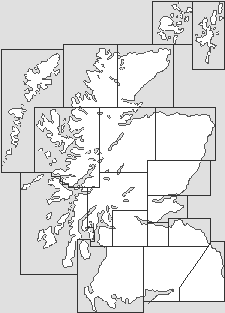 Ardfern Marina |
Ardfern is a busy village which stands on the Craignish Peninsula close to the head of Loch Craignish on the west coast of Argyll. It can be found a mile and a half from the junction of the single track B8002 with the main A816, and is roughly 16 miles from Lochgilphead and 23 miles from Oban.
Ardfern is the largest settlement on the Craignish Peninsula. It has a year-round population of about 400 people, and many more in summer. This is enough to support an impressive range of facilities, including a village store, a cafe, a school, and the Galley of Lorne Inn. The inn is said to have been established in the 1600s or even earlier to serve drovers who had ferried their cattle across to Craignish Point from Jura (and Islay via Jura) en route to markets in Crieff and Falkirk.
At the end of the 1700s the peninsula was in the hands of the Campbells of Craignish, though later land sales meant that by the middle of the 1800s it had been divided into two large estates, Lunga on the north side of the peninsula and Craignish on the south side. The village of Ardfern has stood here for centuries, and in the early 1900s had a busy pier used by passenger steamers and the ubiquitous West Highland puffers carrying goods.
In the second half of the 1900s the population declined to around 200 and the future viability of the community was in question. In 1979 an existing boatyard was purchased by a keen sailor from Yorkshire, Robin Baker. He invested in the development of the Ardfern Yacht Centre, a large marina with associated services near the sheltered head of the loch. Coupled with the release of land for new housing and active steps to encourage local businesses, crafts and artists, the result was the attractive and thriving village you find today.
You reach Ardfern, and the Craignish Peninsula more widely, along the single track B8002: look out for the "Golden hand" sculpture pointing the way from its junction with the A816. The road follows the side of Loch Craignish, passing the village hall, opened in 2005, before reaching the busy yacht centre. The yacht centre is extremely popular as a permanent base for boat owners, and as a stopping off point for those exploring the waters off the west coast of Scotland. Its popularity is doubtless enhanced by the beautiful setting of the head of Loch Craignish, by the wide range of facilities on offer at the yacht centre and in Ardfern, and by its accessibility at all states of tide. The yacht centre is also the starting point for cruises to view the local scenery and wildlife.
The main part of the village begins at the yacht centre, and extends along the road past the shop, the school and the inn before concluding near Craignish Parish Church, built in 1827. Much of the village looks out over a narrow northern arm of the loch towards Eilean Mhic Chrion, one of a number of islands in Loch Craignish.
The rest of the Craignish Peninsula also repays exploration. Beyond Ardfern itself, the road hugs the shore of Loch Craignish for a little over two miles as far as the attractive pebble bay of Bagh Dun Mhuilig, named after a dun or Iron Age fort which lies just inland. This is one of a number of signs that settlement on the peninsula has a long history. Another is found overlooking the south end of the bay. Craignish Old Parish Church, also known as Kirkton Chapel or Kilmory Chapel, is the shell of a rectangular church dating back to the early 1200s. In a shelter in the west end of the church is a superb collection of medieval grave slabs.
Beyond the old church the road crosses the peninsula before running out of steam on the shore of Loch Beag, a mile short of Craignish Point. Overlooking the head of Loch Beag is Craignish Castle. This started life as a tower house built in the years around 1400. A house was added to one side in 1837, and this was reduced in size and altered in the 1900s. Architectural guides tend to be very uncomplimentary about the end result, but you can't deny that it has character.
The only settlement on the north side of the Craignish Peninsula is the planned village and marina of Craobh Haven, built in the 1980s and reached by means of its own access road from the A816.
 The Head of Loch Craignish |

|
|
|
Visitor InformationView Location on MapWhat3Words Location: ///packet.feasted.hurry |
 Galley of Lorne Inn |
 Ardfern Village Store |
 Cottage Overlooking Loch and Island |
 Ardfern School |
 Sculpture at the A816 Junction |






